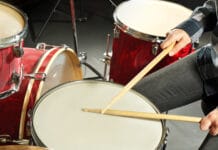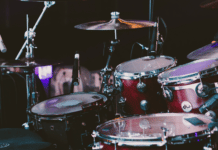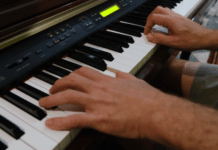Despite their deceptively simple appearance, membranophones are part of a vast and complicated world of musical instruments. And with that, let’s take a look at a membranophone instruments list, and find out if all percussion instruments are a membranophone.
What Is a Membranophone Instrument?
A membranophone instrument produces sound through vibrations on a stretched-out membrane. That’s where the name comes from: membrane and -ophone.
Membranophones are primarily played by striking a stick or mallet on their stretched membranes. You can also use your hands to hit the membranes. For instance, in bongos, you don’t necessarily need to a pair of sticks; tapping the membrane can produce a sound.
Interestingly, you can play a membranophone with friction as well. The cuíca, for example, requires you to rub a stick with wet cloth over its membrane, while your other hand’s fingers presses down the drum’s skin.
Expert Insight: If you think blowing is reserved only for clarinet, trumpets, and saxophone, think again. The kazoo is considered a membranophone.
Membranophone instruments are part of the Hornbostel-Sachs system which classifies acoustic instruments. In a membranophone instruments list, the system, which was created by Erich von Hornbostel and Curt Sachs, classifies the membranophones into five:
- Struck
- Plucked
- Friction
- Singing
- Other
Idiophones (like chimes and xylophone or the glockenspiel), chordophones (like zithers, guitars, lutes, and jaw harps), and aerophones (like harmonica and accordion) are other categories of the Hornbostel-Sachs system.
What Instruments Are Considered a Membranophone?
Within the five categories created by Hornbostel-Sachs, there are only three that make up the majority of membranophones: struck, friction, and blown. Additionally, almost all membranophones are drums.
Let’s take a look at some of the most common membranophones and where they fall into the musical instrument classification:
Tamak
If you’ve ever been to India, you might have heard the tamak. It’s a traditional double-headed drum played by the Santal people, and it produces a deep, rich sound that often serves as the bass for rhythmic dancing.
The tamak is made with thin metal sheets covered in cowhide and wrapped with rope. The body is sometimes deep and barrel-like and sometimes more like a shallow bowl, but the membrane stretched over the top is always tight. It’s played by striking the membrane with drumsticks.
The tamak isn’t well-known outside of India, but it has great cultural significance to the Santal people.
Kazoo
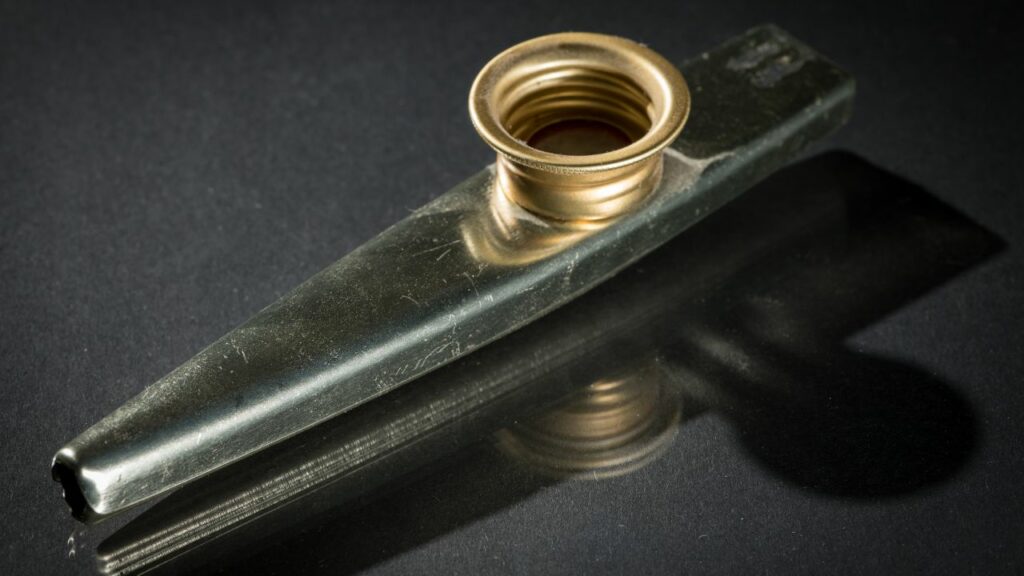
You might think of the kazoo as a wind instrument, but it’s actually a membranophone. It just looks like a flute. You play it by humming rather than blowing, and within its long, cylindrical air chamber, the oscillated air strikes a membrane and produces sound. You can also produce other sounds on the kazoo with wordless vocalizations such as “doo,” “too,” “rrr,” and “brr.”
Variations of the kazoo have existed in Africa for hundreds of years, but the first ones to resemble the modern instrument date back to America in the 1800s. Kazoo playing really took off in the 1920s with the rise of jazz bands and jug bands. It was a common staple in musicals, festivals, dance halls, and vaudeville shows.
Fun fact: The kazoo is one of the only membranophones that isn’t a drum.
Timpani
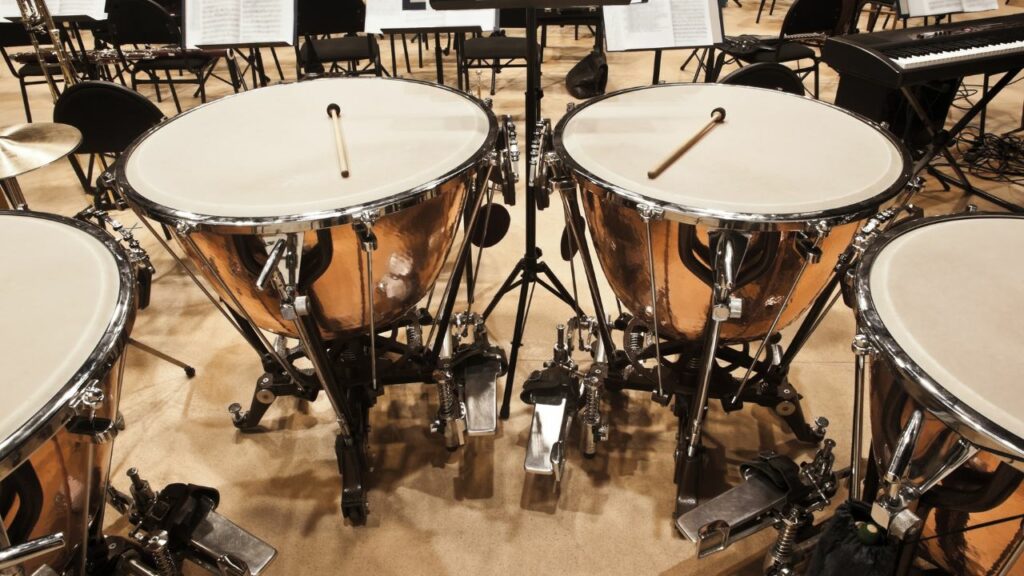
Also known as “timps” or “kettle drums,” timpani are a kind of hemispherical drum that are common in orchestras and marching bands. They have large bowls and membranes traditionally made from animal skins. Less expensive models use plastic membranes.
A distinguishing feature of the timpani is that its pitch is controlled by pedal. Pedal systems can be grouped in three categories: ratchet clutch system, friction clutch system, and balanced action system. Each system has its own pros and cons for the timpanist.
Etymologically speaking, timpani is an Italian word derived from the Latin for “hand drum,” and it’s actually plural. A single drum is called a timpano. A lot of people don’t know this and will mistakenly label multiple drums “timpanis.”
You need at least four timpani to play moderately complex music, including classic music.
Snare Drum
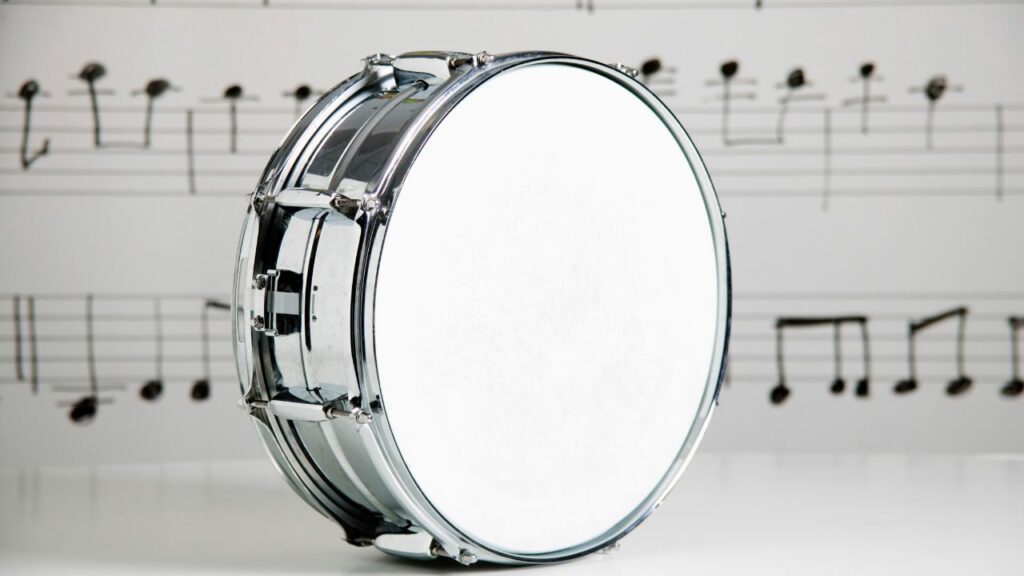
You’ll find snare drums on most membranophone instruments lists. They’re the most widely recognized drums in both appearance and sound, and they’re ubiquitous in rock bands, orchestras, drum lines, and more.
Why are snare drums so popular? It’s probably because they’re so distinctive. Rather than just stretching a membrane over a bowl or barrel, they place a series of stiff wires across the bottom of the drumhead. This creates a sharp staccato sound, also known as a “hiss,” which has become one of the most defining drum sounds of modern music.
Snare drums are considered essential pieces in a drum set, but you can also buy them on their own.
Bongos
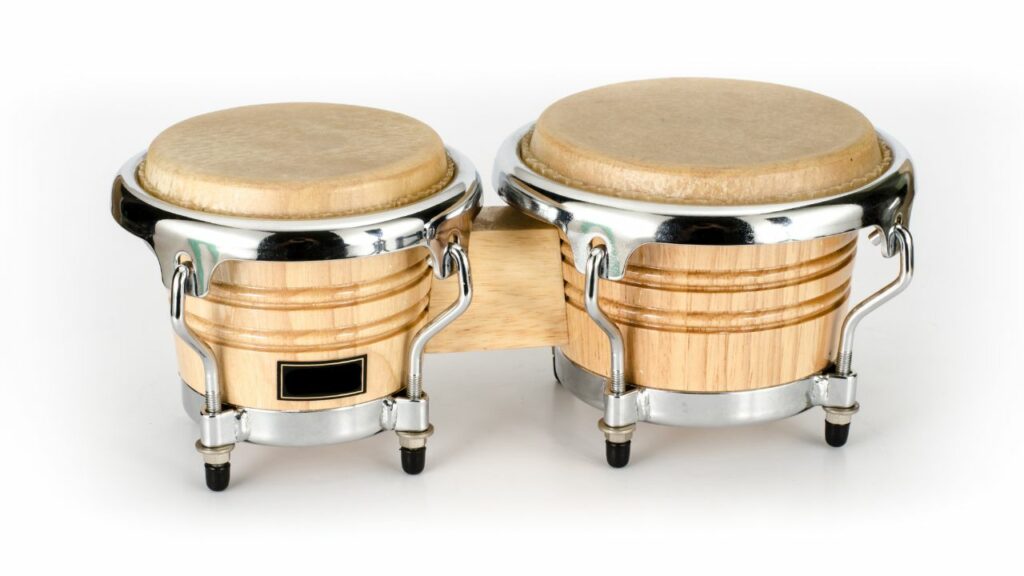
A staple of Afro-Cuban music, bongos are small, open-bottomed drums that are played by hand. Players are called bongosero. Despite their fun, jaunty sounds, they’re capable of producing very complex sequences of music, including the eight-stroke pattern known as martillo or “hammer.”
You might be most familiar with bongos in the context of salsa music, but they’re also popular in everything from jazz to pop to even rock.
Bongo drums are played in pairs. While amateur sets might make both drums the same size, traditional and professional bongo sets have a larger and smaller drum, respectively called the “male” and “female.”
Djembe
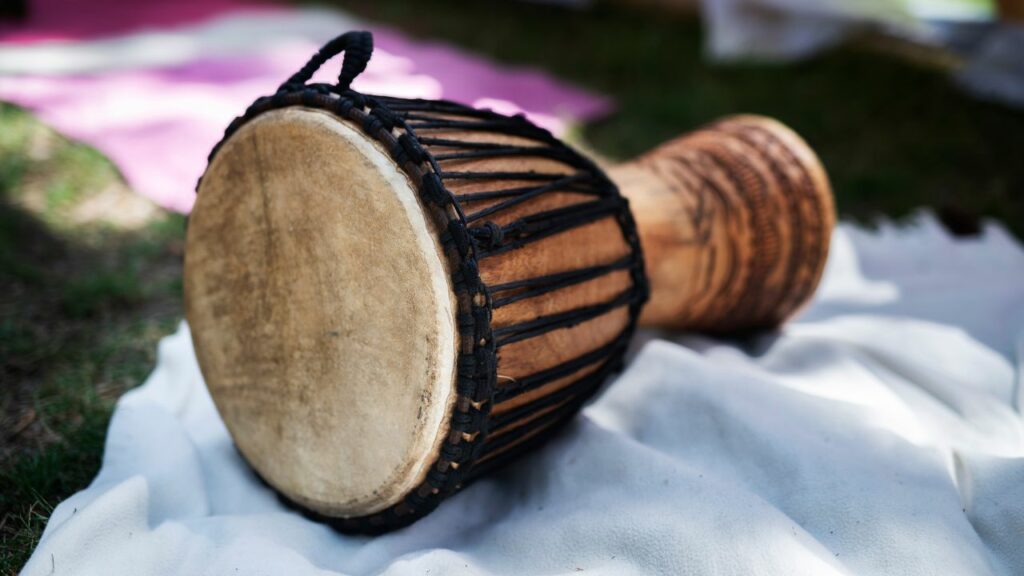
Invented in West Africa, the djembe is a type of goblet drum characterized by its goblet-shaped body and animal skin membrane. Its shell is usually carved out of hardwood and decorated with strings, beads, and painted objects that are important to the player or their tribe.
The name djembe comes from a West African phrase that translates to “everyone gather together in peace,” which is said to be the purpose of the djembe. Playing it is also described as “making the djembe talk.”
The djembe has a loud, distinctive sound that can be easily heard over other instruments, making it ideal for rhythmic chants and festive dances.
Bass Drum
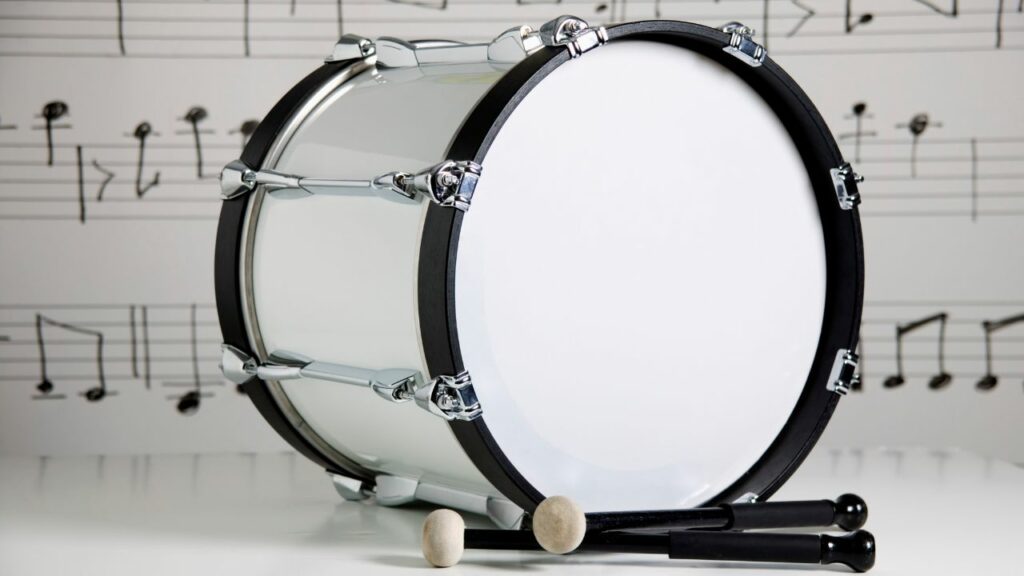
Also called “kick drums,” bass drums are another one that you’ll find on many membranophone instruments lists. While not as recognizable as, say, snare drums, they’re still part of your standard five-piece drum kits.
The most distinguishing feature of the bass drum is its sound. It produces deep, resonant vibrations with indefinite pitch. For this reason, bass drums are often used to mark or keep time during a musical performance. They can also create rolls, climactic single strokes, and special effect sounds meant to mimic thunder or earthquakes.
Tom-Tom
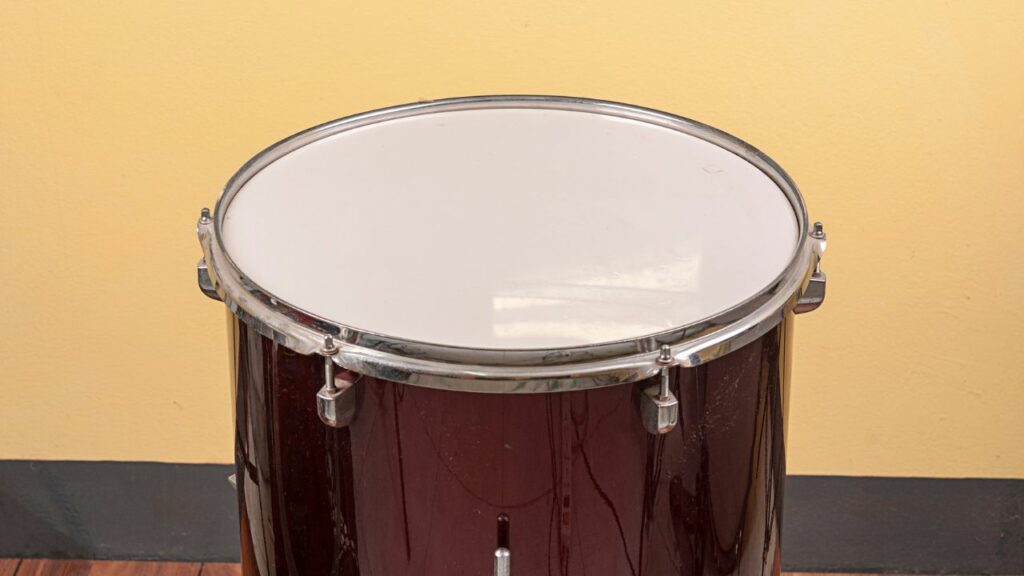
Another essential piece of 21st century drum kits, tom-toms are cylindrical drums that can be tuned to various pitches. They were originally brought to the U.S. in the 1800s by immigrants from around the globe.
There are four different types of tom-tom. The most common is the floor tom, a larger instrument with a drum shell that stands on three legs or gets attached to a cymbal stand. Other models are the rack toms, roto toms, and concert toms.
It’s believed that “tom-tom” is an onomatopoeia for the sound that’s made when striking them.
Tabla

The tabla are small twin drums played by hand. Originally hailing from India, they’ve become popular all across Asia and the Middle East, and you can find them played today everywhere from Bangladesh to Sri Lanka. The word tabla actually comes from the Arabic word tabl meaning “drum.”
While they can be played anywhere and anytime, they have particular significance to Hinduism and Sikhism, and they’re often part of religious songs and ceremonies.
As with many others on this membranophone instruments list, the tabla are considered struck membranophones according to the Hornbostel-Sachs classification.
Comb and Paper
Comb and paper is a unique handmade instrument. Like its name suggests, it’s made from just a hair comb and a sheet of paper. After the paper is folded in half and the comb is slipped inside, the player blows or vocalizes against it to trigger vibrations that create sound.
Despite its rudimentary design, comb and paper can be classified as a membranophone. It’s not unlike a kazoo in the sense that it looks like a wind instrument but is actually defined by its vibrating stretched membrane.
Comb and paper has actually been heard on the radio thanks to its usage in popular songs like “Lovely Rita” by the Beatles and “Crosstown Traffic” by Jimi Hendrix.
Tambourine
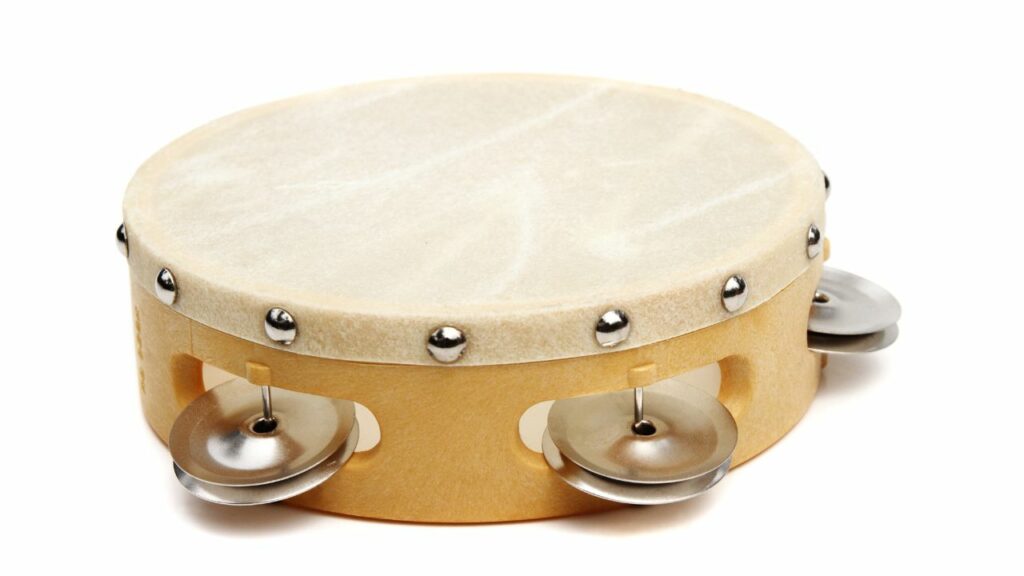
Tambourines have been around since 1700 BC, and they’ve taken many forms since then, including some that aren’t actually membranophones. For example, the jingly plastic tambourines that you played in elementary school are considered idiophones; their sounds are produced by vibrating objects, not vibrating membranes.
Tambourines with membranes do exist, however, and they exist around the world. In Arabic music, they’re known as riqs. In Russian music, they’re known as bubens.
Most tambourines are played by hand, but they can also be hit with sticks or struck against the hips or other body parts.
Striking Gold With Membranophone Instruments
This is far from a comprehensive membranophone instruments list. There are many more out there, including rare ones that exist on the fringes of Hornbostel-Sachs’s classification system. Consider this simply your introduction to membranophones.
Table of Contents



